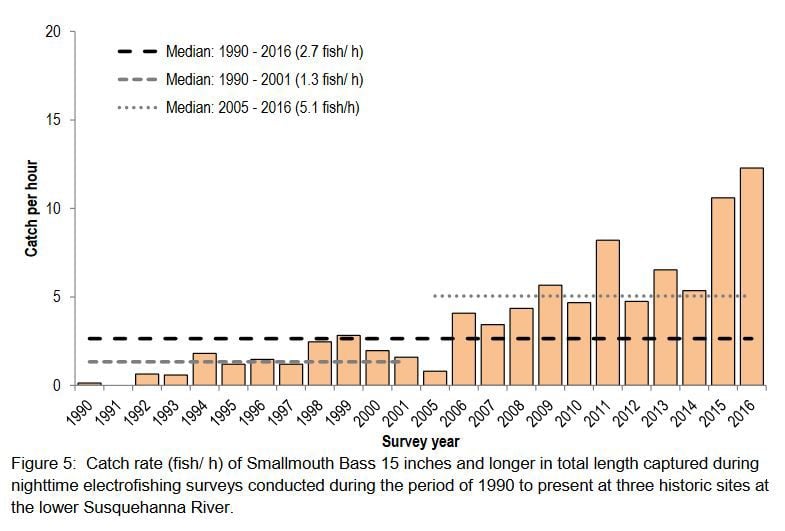M
Mike
Well-known member
- Joined
- Nov 10, 2006
- Messages
- 5,559
Within the lower gradient portions of the Schuylkill R, starting at Gibralter, Berks Co and gradually getting worse downstream , sedimentation/habitat degradation have greatly reduced reproductive success in all but the best, isolated habitat areas. The last remaining good population heading in a downstream direction is just south of Pottstown until the river makes its way to the Bridgeport/Conshohocken area. We are not clear on whether the population is still good in the stretch within the mile below Flat Rock Dam.
In contrast, any perceived population decline in the segment from Gibralter to Port Clinton is likely the result of natural reproduction variations associated with untimely high and/or cold spring flows. Four of the six past years have yielded below average reproductive success indices, which was also the case on the lower Delaware. The other two years were average. Additionally, four of six below average year classes on the lower Delaware occurred in the the same years as they occurred in the upper (above Gibralter) Schuylkiill, further supporting the regional effects of precip and temperature.
As for larger fish now being caught in the Delaware, if that is the case it should not be a surprise if one recalls what happened on the lower Susky when the reproductive success declined. Reduce the competition in waters with good large fish habitat and adequate forage and you are likely to see a better population of larger fish. That's what occurred on the Susquehanna. The remaining SMB's bodies became quite fat and growth rates accelerated by the equivalent of a full year's growth in comparison to growth rates prior to the substantial disease caused mortalities that started in 2005.
In contrast, any perceived population decline in the segment from Gibralter to Port Clinton is likely the result of natural reproduction variations associated with untimely high and/or cold spring flows. Four of the six past years have yielded below average reproductive success indices, which was also the case on the lower Delaware. The other two years were average. Additionally, four of six below average year classes on the lower Delaware occurred in the the same years as they occurred in the upper (above Gibralter) Schuylkiill, further supporting the regional effects of precip and temperature.
As for larger fish now being caught in the Delaware, if that is the case it should not be a surprise if one recalls what happened on the lower Susky when the reproductive success declined. Reduce the competition in waters with good large fish habitat and adequate forage and you are likely to see a better population of larger fish. That's what occurred on the Susquehanna. The remaining SMB's bodies became quite fat and growth rates accelerated by the equivalent of a full year's growth in comparison to growth rates prior to the substantial disease caused mortalities that started in 2005.





